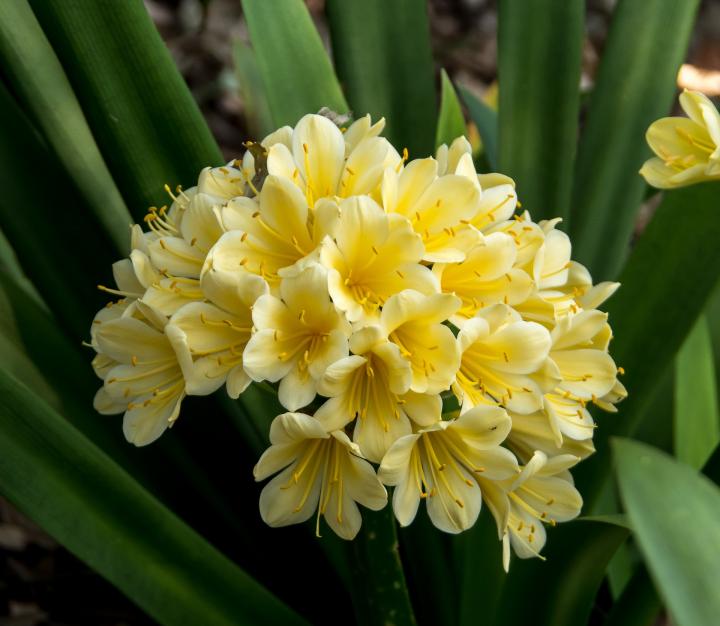
Growing Clivia: Watering, Light, Repotting, and Pests
The Almanac Garden Planner - Use It Free for 7 Days!
Plan your 2025 garden with our award-winning Garden Planner.
There are six species of clivia and many hybrids, but the orange-flowering C. miniata is most commonly grown. Yellow varieties are available, but they are very expensive—around $300! Plant breeders have introduced other colors, like red, white with green stripes or red edges, and yellow with orange tips. There are some clivia varieties with green and white striped leaves, too. All types send up a cluster of 12 to 20 small, trumpet-shaped flowers on a tall stem called a scape.
- C. caulescens, aka stalked clivia: grows 2 to 3 feet tall (some reach 6 feet when fully mature); alone among the species in having a thick stalk that produces leaves at the top
- C. gardenii, aka Major Garden’s clivia (for British Maj. Robert J. Garden, who discovered and collected it in 1855 and sent it to Kew, where it bloomed the next year): slender, tubular, pendulous flowers
- C. miniata (the name refers to minium, the color of red lead, and evokes the common flower hue): the only one of the six species that has upright or nearly upright flowers; varieties are available in other colors, as well—near-white, peach, pink, and yellow
- C. mirabilis (“miraculous”): discovered in 2002, thriving in full sun in southwestern Africa’s Namaqualand
- C. nobilis: plant that inspired the genus and whose name suggests nobility; considerably slower grower than other species; from seeds, takes 6 or more years to flower
C. robusta: largest and newest of the species, named in 2004; thrives in marshlands; boasts the highest scape at 5 or more feet tall

ADVERTISEMENT
How can I send u a picture of what I believe to be a Clivia












